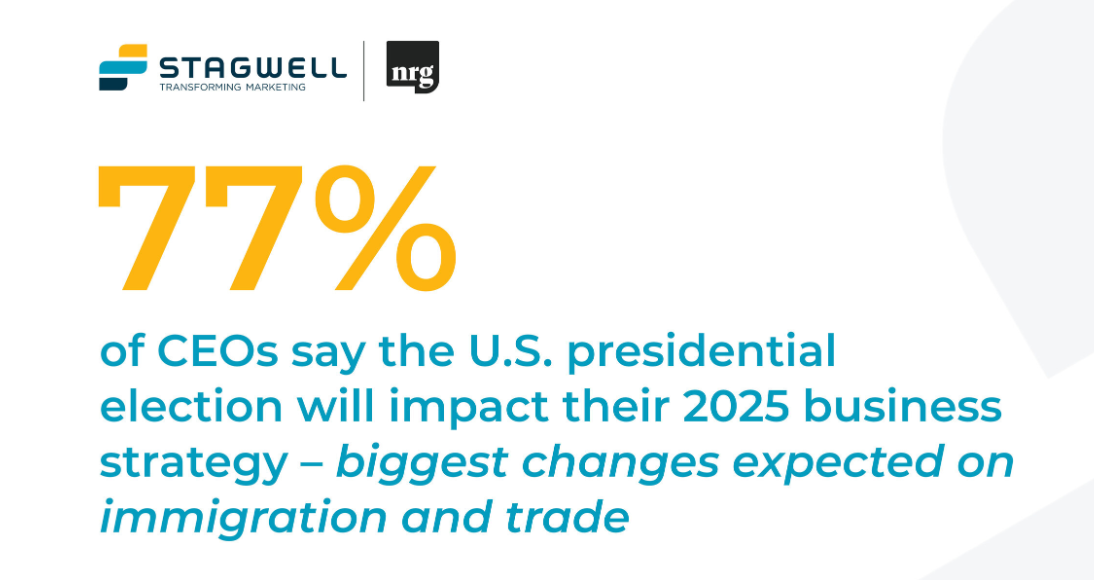CONTACT
Beth Sidhu, Chief Brand and Communications Officer, Stagwell
hello@stagwellglobal.com
Insights for the C-Suite
Enjoyed these insights? View more commentary from our global marketing, technology, and creative experts in Stagwell’s “C[x]O” series for the C-Suite. Click here to explore more.
SIGN UP FOR OUR INSIGHTS BLASTS
Generative AI is changing the marketing game. In April, Stagwell headed to Google Next to discuss that change, and what it means for Chief Marketing Officers and other C-Suite leaders in the next year.
The event also marked Stagwell’s first software release via its Google Cloud partnership, introducing a data clean room to securely enhance client data with Stagwell’s extensive resources. More on that here.
For now, hear from our at Stagwell Marketing Cloud and Left Field Labs about the three biggest takeaways from Google Next.

The Sky’s the Limit But Use Cases are the Target
At Google Next – and at several marketing and technology conference this year, including CES and SXSW – the clear challenge to attendees was the two-step from theoretical implementations of AI to hard use-cases that provide value to consumers (and reasons for investment). It’s no wonder companies in attendance debuted over 101 real-world use cases for generative AI, spanning applications to consumer experiences, back-end-operations, insights, and more.
Some common themes emerged as to where AI is providing the most immediate value:
- AI to accelerate the curation of essential business insights: AI21 Labs showcased how they use a BigQuery integration called Contextual Answers to allow users to query data across their businesses conversationally.
- AI to put the power of storytelling in everyone’s fingertips. Google unveiled Google Vids, a new AI-powered video creation app in its Workspace suite that can do everything from generate a storyboard, piece together first drafts of videos from stock multimedia, and do voiceovers.
- AI to bring real-time tracking to the customer experience: UPS is constructing a digital twin of its entire distribution network that will enable customers to see where their packages are at any time.

AI Will Mean a Rewriting of Every Customer Interface – Here’s Where to Begin
Artificial intelligence represents a quantum leap for creativity and productivity. As a network on the beat of marketing, we know that AI’s rise will mean a rewriting of almost all customer interfaces as companies race to deliver consumers the personalized experiences they’ve desired since the dawn of the internet. At Google Next, Stagwell CTO Merrill Raman and Stagwell Marketing Cloud CTO Mansoor Basha emphasized that the first step brands should take to reap the benefits of AI should be assessing their organization’s data infrastructure to ensure it is primed for AI.
Tactically, that may mean deep clean-up of existing first party data sources using data science best practices to get the information organized in a manner that AI can extract useful insights from. Or it may mean partnering with a third-party data provider who can supplement your view of existing and prospective consumers.

AI Can Be the Bedrock for Trust, When Implemented Appropriately
As Left Field Labs CEO Sarah Mehler shared at Google Next: with growth in AI utilization, a critical question to consider is how do we build trust with audiences when considering AI implementation? Striking the right tone in AI-enabled communications is a primary step. And remember that communication that reflects cultural and demographic nuances is what ultimately resonates with audiences and builds trust in new systems. Well-practiced organizations will apply sentiment analysis to better understand the emotions of a user and provide appropriate responses (thus driving traction and building more successful outcomes).
Attention to detail is also crucial for building trust in AI implementations. A “Chain of Verification” is one of several methods that can be employed to enhance the accuracy of information provided by AI systems. This process involves multiple steps to validate information before it is conveyed to the user. For instance, after our language model generates a response, we can employ a separate validation model to scrutinize the facts within that response. This secondary check helps to identify and correct any inaccuracies or ‘hallucinations’—instances where the model generates false or misleading information. By systematically verifying data through multiple layers, we can provide more reliable and trustworthy outputs.
Wondering where to begin with AI implementation in your organization?
Email Beth Sidhu, Chief Brand and Communications Officer at Stagwell, to discuss how we can support your organization’s digital goals.
Related
Articles
In the News, Press Releases
Mar 07, 2025
Left Field Labs Celebrates 17 Years of Building What’s Next Amid Expanding Global Client Roster

Artificial Intelligence, Artificial intelligence, Augmented Reality, Marketing Frontiers
Mar 03, 2025
Twister AIR: Revolutionizing a Classic with AR and AI-Driven Gameplay

In the News, Press Releases, Thought Leadership
Oct 30, 2024
77% of CEOs Say the Election Will Impact their 2025 Business Strategy; 85% are Bullish on Investment in the Gulf Region, Reveals Stagwell (STGW) Survey

